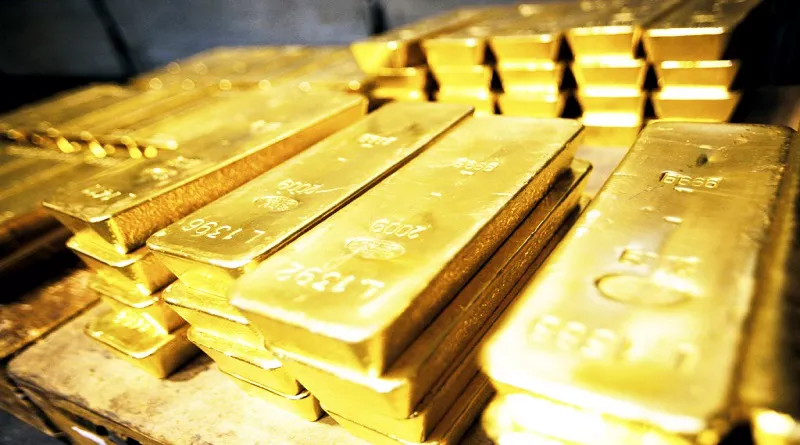Gold, with its timeless allure and enduring value, continues to be a symbol of wealth and prosperity. In this article, we embark on a journey to unravel the intricacies of determining the worth of 100 tons of gold. As we delve into the market dynamics, historical perspectives, and various influencing factors, we gain a comprehensive understanding of the significance of such a colossal quantity of this precious metal.
Understanding Gold Valuation: A Complex Interplay of Factors
Market Dynamics: The Gold Price Rollercoaster
Current Market Price:
The starting point for assessing the value of 100 tons of gold is the current market price. As of the latest data, the price per ounce stands at $1,800.
Calculate the value of one ton of gold: $1,800/ounce * 32,000 ounces/ton = $57,600,000 per ton.
Multiply the value per ton by 100 tons to determine the total value: $57,600,000/ton * 100 tons = $5.76 billion.
Volatility and Fluctuations:
Gold prices are susceptible to fluctuations driven by various factors, including economic conditions, geopolitical events, and investor sentiment.
Analyzing the historical volatility of gold prices provides insights into the potential range of valuations for 100 tons of gold.
Historical Perspectives: Gold’s Journey Through Time
Cultural Significance:
Gold has held cultural and symbolic significance throughout history, transcending borders and civilizations.
Exploring its historical journey unveils patterns and trends that contribute to understanding its present-day value.
Gold as a Hedge:
Historically, gold has been a hedge against economic uncertainties and inflation. Examining its role during significant historical events sheds light on its enduring value.
Global Context: Placing 100 Tons in the Gold Reserve Landscape
Global Gold Reserves: Benchmarking 100 Tons
Comparison with National Reserves:
To contextualize 100 tons of gold, it’s essential to compare this quantity with the gold reserves of nations.
Some countries hold vast amounts of gold, and understanding their reserves provides a sense of the scale of 100 tons.
International Implications:
The global distribution of gold reserves influences its market dynamics. Changes in reserve levels of major economies can impact gold prices.
Analyzing the interconnectedness of gold reserves offers insights into the broader economic landscape.
Market Influencers: Economic Indicators and Gold Valuation
Interest Rates and Inflation: The Dance of Gold and Finance
Interest Rate Impact:
Gold’s value is influenced by interest rates; low rates make gold more attractive as it doesn’t yield interest like bonds.
The inverse relationship between interest rates and gold prices requires a nuanced analysis.
Inflation Hedge:
Gold is often seen as a hedge against inflation. Examining historical correlations between inflation rates and gold prices provides a predictive lens.
Currency Strength and Weakness: The Currency-Gold Nexus
Currency Valuation:
The strength or weakness of major currencies, especially the U.S. dollar, plays a pivotal role in gold valuation.
A weaker currency often correlates with higher gold prices, offering investors a safeguard against currency devaluation.
Global Currency Trends:
Analyzing global currency trends and their impact on gold prices allows for a nuanced understanding of the intricate relationship between currencies and gold.
Practical Applications: Gold Consumption Beyond Investment
Industrial Uses: Gold Beyond Jewelry
Electronics and Technology:
Gold’s conductivity and corrosion resistance make it indispensable in the electronics industry. The increasing demand for electronic devices influences gold prices.
Assessing the role of gold in technological advancements provides insights into future market trends.
Medical and Aerospace Applications:
Gold’s applications in medicine and aerospace contribute to its overall demand. Exploring these niche markets sheds light on the diverse uses of gold.
Jewelry Industry: Ornamental Demand Trends
Cultural Shifts in Jewelry Demand:
The jewelry industry is a significant consumer of gold, with trends influenced by cultural shifts and changing consumer preferences.
Understanding the dynamics of the jewelry market adds another layer to predicting gold price movements.
Potential Threats and Challenges: Navigating Risks in the Gold Market
Regulatory Changes: The Ripple Effect on Gold Prices
Mining Regulations:
Changes in regulations governing gold mining can impact the overall supply, affecting gold prices.
Investors and stakeholders closely monitor regulatory developments to anticipate potential shifts in the market.
Trade Tariffs and Policies:
Trade policies and tariffs can disrupt the global gold market. A comprehensive examination of international trade dynamics offers insights into potential risks.
Technological Advancements: Challenges and Opportunities
Alternative Materials:
Advances in technology and the discovery of alternative materials with properties similar to gold pose a challenge to its market value.
The intersection of technology and traditional industries presents both challenges and opportunities for the gold market.
Sustainability and Responsible Mining:
Increasing emphasis on sustainable and responsible mining practices introduces new dynamics to the gold market.
Assessing the impact of these practices on gold prices highlights the evolving nature of the industry.
Investor Considerations: Navigating Market Sentiment
Speculative Trading: The Psychology of Gold Prices
Market Sentiment:
Gold prices are influenced not only by fundamental factors but also by market sentiment and speculative trading.
Understanding investor psychology and its impact on gold prices is crucial for making informed investment decisions.
Long-Term Investment Potential:
Despite short-term volatility, many investors view gold as a long-term store of value. Evaluating its historical performance and potential for capital preservation provides a foundation for investment decisions.
Conclusion: Deciphering the Gold Cipher
In conclusion, the worth of 100 tons of gold is a multifaceted puzzle intricately woven into the fabric of global economic dynamics and historical significance. From market forces to historical contexts and potential challenges, the value of gold extends beyond mere financial calculations. As we navigate the labyrinth of factors influencing gold prices, the conclusion emerges: the worth of 100 tons of gold is not merely a number but a reflection of centuries of human history, economic evolution, and the enduring allure of this precious metal.

